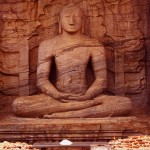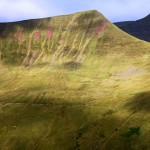Guatemala – Indigenous Western Highlands (16.08.14)
Guatemala will always stand out as one of my most memorable Latino travel experiences. In addition to combining two very different coastlines (Pacific and Caribbean), some of Central America’s most dramatic inland scenery (mountains, spewing volcanoes, endless rainforest) and mystical ancient cultures (Maya, Olmec, Toltec), the country boasts some of the world’s most prolific and exciting indigenous cultures.

With the majority of people located in the central and western regions, 40% of the indigenous population are based in the remoter rugged Western Highlands. They live according to their long-standing indigenous culture, dominated by local village customs and spiritual beliefs. Directly linked to the Maya, there are twenty-six indigenous languages (in addition to the all-encompassing Spanish). Indeed today’s travellers, skipping between different daily markets and festivals, can hear as enormous a variety of languages as they can see local costumes.
For example, when I first visited Guatemala twenty-five years ago, I heard Quiche, Cakchiquel and Kekchi all within the first hour at the local village market. Having arranged clients’ trips to Guatemala’s Western Highlands for a similar period, we still find that some of the most exciting stories returning visitors tell us are about their experiences when visiting the colourful, vibrant and unique indigenous areas.

Travelling westward from Guatemala City, the first port of call is the charming colonial town of Antigua. It’s the best location for being within striking distance of the capital and the splendid local volcanic mountain scenery. As you climb into the Western Highlands the dramatic landscape unfolds; lush vegetation is dominated by stunning lake scenery, volcanoes and ever-present brightly dressed indigenous communities.
As rural people their traditional lifestyle focuses on men working in the fields as the womenfolk look after the children and local commerce. Markets are the traditional heartbeat of local life, welcoming visitors from miles around. With so much choice of local markets, visitors can explore a different highland jamboree on each day of the week. The explosion of colour is always majestic, as brightly coloured fruit and veg stalls compete with the local ladies’ florescent textiles and impressive handicrafts.

Tourism has been an important contributor to the Western Highlands for several decades now, bringing in considerable income to the locality. Moreover, the indigenous people, while enjoying the opportunity to sell their wares, can now do so during what is a relatively calm political period.
Previously, long periods of instability and considerable civil rights abuses particularly affected Guatemala’s twenty one different Mayan groups, who together make up 51% of the country’s population. For example the appalling ‘national holocaust’ of the 1980s saw over 200,000 deaths and 200,000 refugees displaced into Mexico. Since then a continuation of local political instability has dominated life in the Western Highlands; the barometer of tourist numbers measures, as much as highlights, the importance of the outside world’s influence.
That said, as a destination the Western Highlands have continued to attract visitors, and we at Nomadic Thoughts have successfully arranged travel for clients to the area – including Chiapas in south eastern Mexico – over the past couple of decades.

When I first visited Guatemala in the early 1990s, the euphoria there at the opportunity for a period of peace and tranquillity was infectious. Tourism was taking hold and the local community was beginning to embrace the benefits.
One example of this is Lake Atitlan. Located in the heart of the Western Highlands, it continues to be one of Central America’s most exciting inland regions, forming as it does the spiritual hub for so many travellers and tourists. Today, as ever, the remarkable strength of the local culture still stands out as one of Latin America’s most powerful and welcoming symbols.
The images in this blog, although taken when I first visited over two decades ago, are similar to the sights and sounds visitors will experience today. Colourful markets continue to offer some of the best opportunities for cultural exchanges.



















